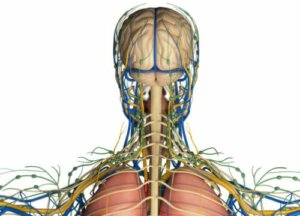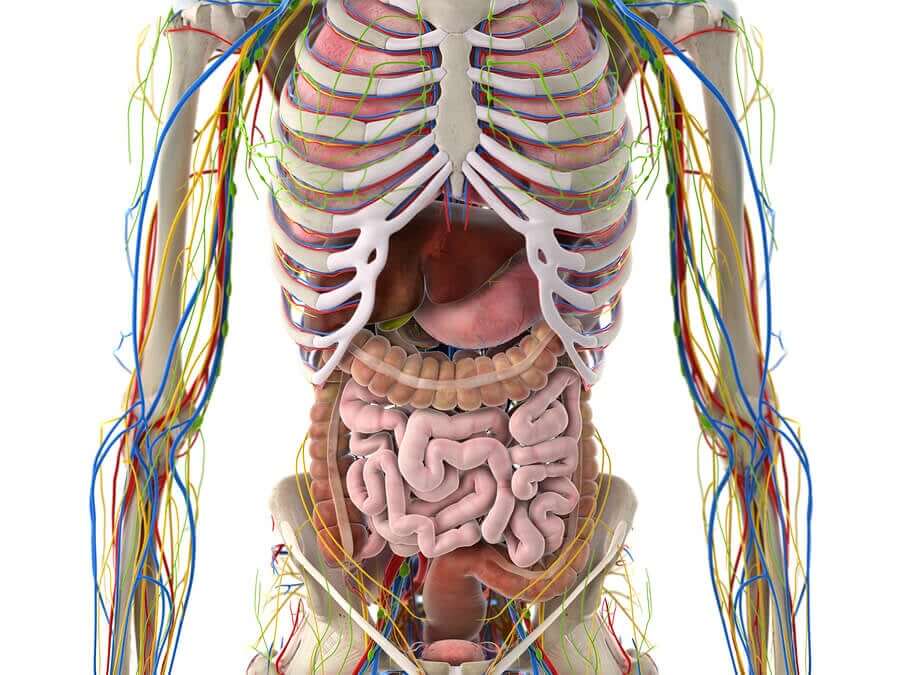What Is the Function of the Lymphatic System?


Written and verified by the doctor Leonardo Biolatto
Most people are aware of the existence of the circulatory system, but few know the function of the lymphatic system. Despite this lack of knowledge, lymph plays a fundamental role in the human body. It’s another type of circulation related to blood and we couldn’t live without it.
The lymphatic system transports lymph from the tissues to the blood in a unidirectional way. That is, it has a single path, in one direction only, and doesn’t return.
Lymph is a liquid that is produced in the tissues after filtration of the blood. We could say that the beginning of lymph is the interstitial fluid, and that this fluid comes from the blood that the arteries filter, and it soaks the body cells.
Since it’s a filtrate, the lymph would continue to accumulate in the tissues as long as there’s blood circulation. To avoid this stagnation, the function of the lymphatic system is to drain it between the cells so that it returns to the blood circulatory system.
What are the parts of the lymphatic system?
The lymphatic system fulfills its function in the body through its different components. The lymphatic vessels and lymph nodes are the ones that propel and conduct the lymph on its journey. Let’s take a closer look at each one.
Lymph
As we’ve already mentioned, lymph is a liquid that comes from the filtrate of the blood. It’s found in the tissues as interstitial fluid and is composed mainly of proteins, salts and white blood cells. It’s colorless, unlike blood.
To move in the lymphatic system, lymph uses muscle power. There’s no pump to drive the circulation, as the heart does with blood. Through habitual muscle movement – walking, exercising, performing everyday tasks – the muscle fibers force the lymph to move back and forth.

Lymphatic vessels
As the blood vessels – arteries and veins – are components of the circulatory system, the lymphatic vessels are designed for the conduction of lymph. Their wall is similar to the vein walls, and they also have valves that try to stop the lymph from flowing backward when it’s ascending.
The lymphatic vessels that are introduced into the tissues are small, to the point of becoming thinner than capillaries. This way, they can take up the interstitial fluid and then conduct it. From the capillaries, these vessels increase in size until they form two main ducts:
- Right lymphatic
- Thoracic
Both ducts flow into the blood circulation, more specifically, into the venous system. The receiving veins are the superior cava and the left subclavian.
Keep reading: Lymphoma is Treatable if Detected Early
Lymph nodes
Lymph nodes are the best-known components in the lymphatic system. While their function is unclear in the general population, we all know that enlargement of the lymph nodes is a health warning.
A lymph node is a nodule of the lymphatic system measuring less than one centimeter under normal conditions. They’re generally grouped together, several nodes being close to each other.
They’re responsible for filtering the lymph that passes through them and for producing defense cells such as white blood cells. Both external microorganisms and defective cells should be filtered by the ganglia so that they don’t continue their pathogenic path. In these cases, when they detect something abnormal, they increase in size.

The functions of the lymphatic system
Clearly, the lymphatic system has a circulatory and protective function. It circulates lymph to complement the circulatory system and, at the same time, constantly checks for invading substances and microorganisms to stop any pathogens.
In summary, we could say that there are three functions of the lymphatic system:
- Circulatory: The lymphatic vessels collect the lymph from the tissues to empty it into the circulatory system. Through muscular movement, they propel the liquid throughout the body so that it moves and doesn’t stagnate. In addition, it has valves in its path to ensure the unidirectionality of the lymph, which cannot go backwards on its route.
- Filtering: The lymphatic system has a filtering function. Some substances are large or molecularly heavy for the circulatory system. In these cases, the lymphatic vessels intervene, transporting what can’t be carried by the blood.
- Immunological: The lymph nodes are combat stations for infections. As they can produce white blood cells, these small organs are activated if they detect a potentially pathogenic foreign compound. They also play a key role in the internal detection of cancer. Lymph nodes can recognize mutated cells that would give rise to tumors, and they even have the ability to eliminate them.
As you can see, the function of the lymphatic system is vital. If it didn’t exist, the circulatory system wouldn’t be able to function as it does, we would accumulate fluid in the tissues, and we would be much more prone to infections.
All cited sources were thoroughly reviewed by our team to ensure their quality, reliability, currency, and validity. The bibliography of this article was considered reliable and of academic or scientific accuracy.
- Ferrandez, Jean-Claude. El sistema linfático. Ed. Médica Panamericana, 2006.
- Donoso, E. Varela, et al. “Capítulo I: generalidades de los linfedemas y de la circulación linfática: patogenia y fisiopatología.” Rehabilitación 44 (2010): 2-7.
- Tercero, Carmina. “El drenaje linfático.” Rev. Instituto de medicina vibracional (2005): 1-6.
This text is provided for informational purposes only and does not replace consultation with a professional. If in doubt, consult your specialist.








